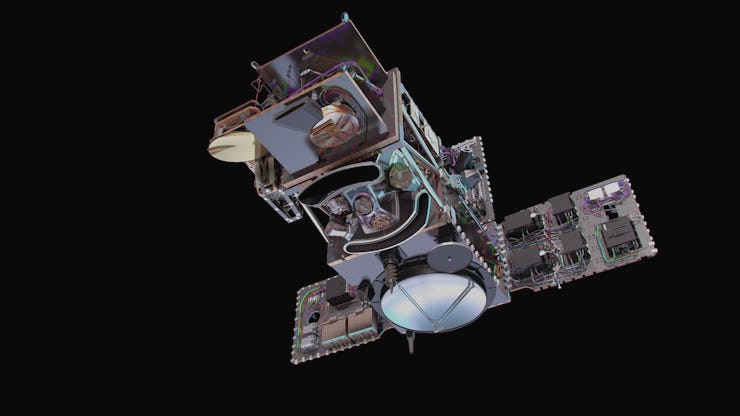Watch the Third Sentinel Satellite Get Launched Into Space Today
It's taking off from Russia this afternoon on a mission to monitor the planet's climate.

The European Space Administration will launch Sentinel-3A on Tuesday at 5:57 p.m. GMT (12:57 p.m. EST). The third satellite under its auspicious Copernicus Programme, Sentinel-3A will be carrying up a slew of instruments to measure Earth’s oceans, atmosphere, and climatic processes all from Earth’s orbit.
Those who want to watch the launch can hop over to the ESA’s website and catch the livestream.
Initiated by the European Commission, Copernicus (formerly the Global Monitoring for Environment and Security program) is an $9.3 billion endeavor to establish the network and technology that will allow Europe and the rest of the world to conduct autonomous, multi-level observation of Earth. Think of it as a system that will provide 24-hour eyes on Earth from the sky above, monitoring the planet’s “health,” providing security and emergency response information, and allowing scientists to access a ton of data they have never been able to collect before.
When it reaches an altitude of 240 km, the second stage of the rocket separates.
While the broad scope of this project includes a lot of ground-based instruments, the space component is the most compelling. Sentinel-3A, like its predecessors already in orbit, will be focused on making measurements of what’s happening on the surface below. This satellite in particular will be charged with monitoring ocean and land data.
Sentinel-1, launched in April 2014, is currently collecting weather and climate-related data. Sentinel-2 provides high resolution imaging for specific land services related to vegetation, soil and water cover, and inland waterways, as well as information for energy services.
This third satellite is a special collaboration by both the ESA and EUMETSAT, which is Europe’s premiere organization dedicated to providing meteorological services to 30 member states.
Each Sentinel mission is actually a pair of satellites that work together — an A and a B. Sentinel-3B is expected to join its partner sometime next year, though the ESA is still planning out the logistics.
Until then, we’ll have to keep our eyes on this satellite blasting off from Russia’s Plesetsk Cosmodrome and look forward to what new knowledge of our world it sends back.